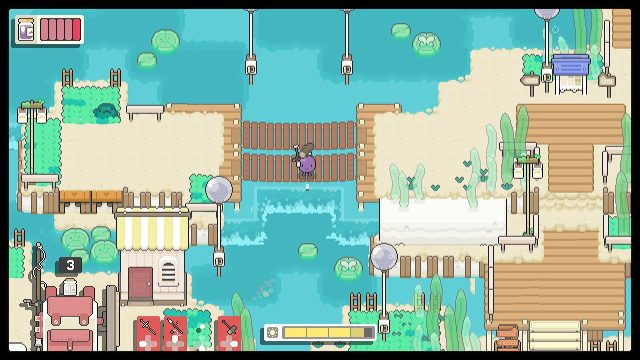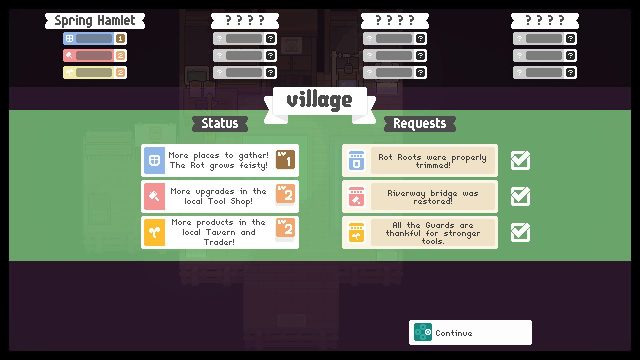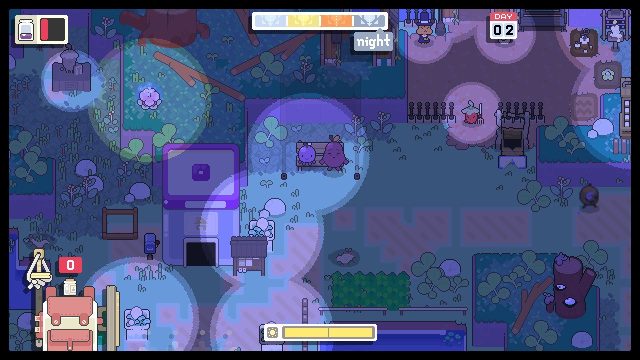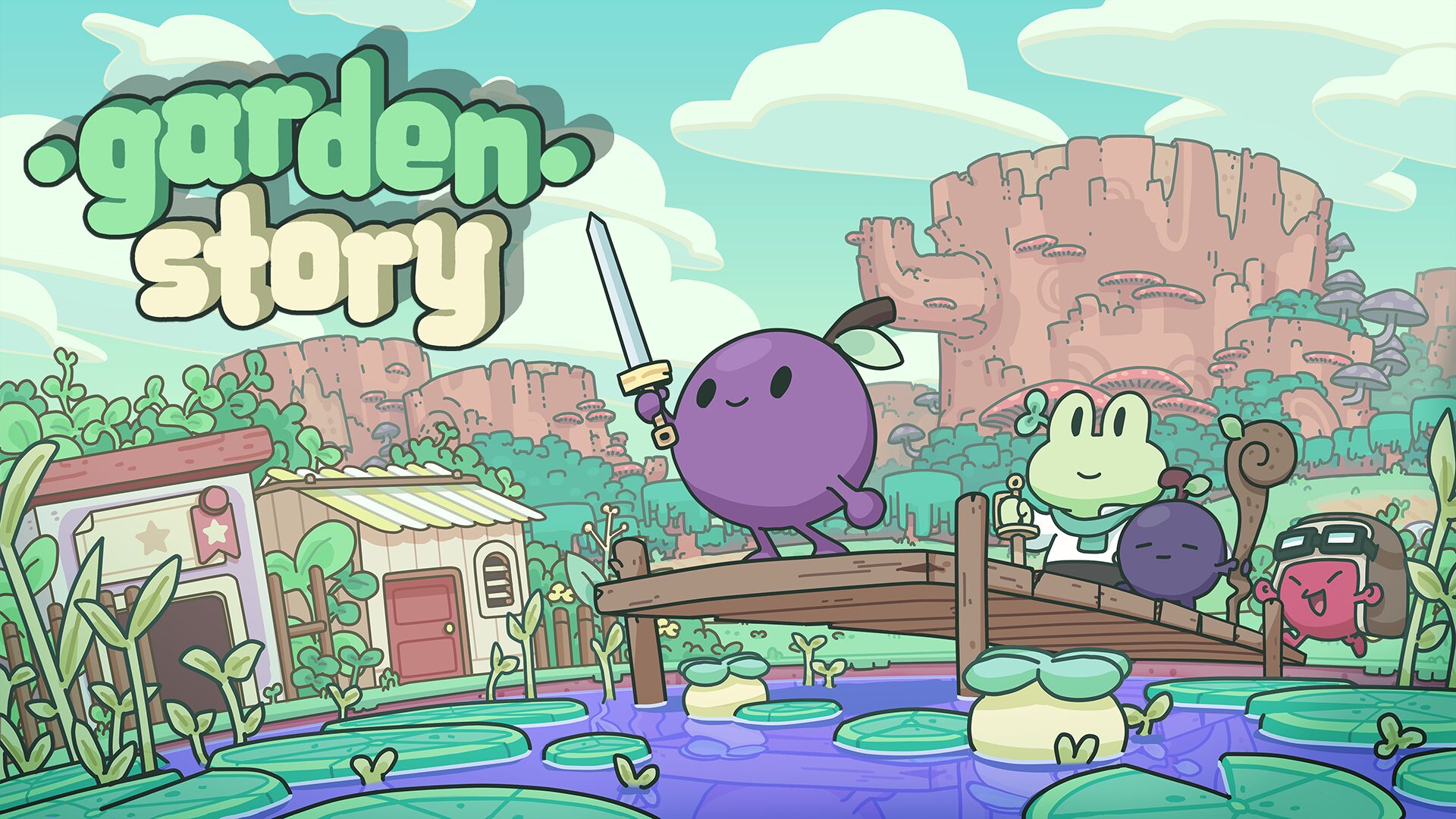Take your time
Garden Story is one of several indie games that surprise-dropped on the Switch this week, and it’s frankly adorable. It tells a fun story about a tiny grape, Concord, who has to become a Guardian and fight the Rot. But at its core, it’s also about community. Garden Story isn’t just about defeating evil, but building a home, and how everyone contributes to that home together.
There’s something about building a community that feels really good in games. So many games take you through towns, but I really like the moments where I get to build something I can call my own; whether that’s a village in Dragon Quest Builders, or a mining operation in Dyson Sphere Program, or a fortress in They Are Billions. Garden Story hits those same notes, but with a focus on community—how each person helps in their own way.
Once you’ve played through the early tutorial sections, Garden Story gives you a place to call home and a bulletin board. Every day, the citizens of the town put requests on the board for you to take care of as Guardian. It might involve clearing out some Rot, the gooey monsters that plague the idyllic towns; or it might mean repairing some fencing, or re-establishing a bridge; or even just picking up some resources to put in the storage box.
These tasks are pretty straightforward, though they thankfully haven’t ever become tedious. Most of Garden Story so far has focused on resources, and gradually picking up requests to fill up meters. The more you help around town, the more shops can open up and offer better items.
Moment-to-moment, Garden Story can feel like a lot of different kinds of genres and games. It’s probably closest to a Legend of Zelda game, with top-down exploration and combat, and some dungeons to explore. It has some cool bosses from what I’ve seen as well, and the equipment Concord is picking up seems real fun to work with.

The equipment is where things start to feel a bit different, as the second town—the one I’m currently working my way through—features the Dowsing Rod heavily, as a sort of fishing rod. I can use it to grab items out of the ocean, pull enemies closer, or rip shells off the heads of Rot so I can hit them with my Pick.
There are elements of gardening and resource-growing too, though they seem pretty low-key for the moment. And with the setup of the game, it looks like Concord will likely move from area to area, helping each little village in the Grove (the world of Garden Story) get back on its feet.
But Garden Story has also just been about building a home. The more tasks I complete, the more lively the town starts to feel. Some townsfolk might even start to ask me for favors, or just chat with me as I go about handling the day’s problems. I got some lenses for one character, a strong-hearted little cherry, and they were moved by my help. They even offered to stand guard at my home in the evenings, so I didn’t have to worry about kicking out any Rot before going to sleep.

Add on an absolutely incredible look, with some really amazing pixel art, and some nice, cheery tunes, and Garden Story makes for a very relaxing game. Usually, checklist games can wear on me after a while. Even in Animal Crossing: New Horizons, I would get occasionally stressed out about making sure I made my rounds every day, and maxing out my potential gains and profit. (Not to mention the Turnip Market, which was a whole thing.)
With Garden Story, and its thankfully offline story, I’m finding myself using it as a way to unwind at the end of the day. The Stardew Valley comparison might be obvious, thanks to its art style and garden focus, but the thread I’m finding between the two isn’t just the look or subject material, but the general mood.
Garden Story is about hanging out around town and helping people out. It’s about picking up some tasks and contributing, and feeling like you’ve done something good for the village. It’s hitting some resources and seeing a little note in the corner of the screen that says, “Concord is learning the value of contributing,” and then activating a new Memory—a way to slot in skills and stat upgrades when you rest—that reflects what you’ve learned in the course of helping out.

Through these little moments, Garden Story finds ways to show through progression, gameplay, and story how a community works together. How its members can look out for one another, and how the whole can lift each other up. It’s a cozy, pleasant little experience that’s quickly become my go-to on the Switch, and if building a quaint hamlet filled with adorable frogs and fruit hanging out sounds like a good time, you’ll probably dig it too. And did I mention there’s a cactus named Saguaro?!
Garden Story is available now on both Nintendo Switch and PC via Steam.


